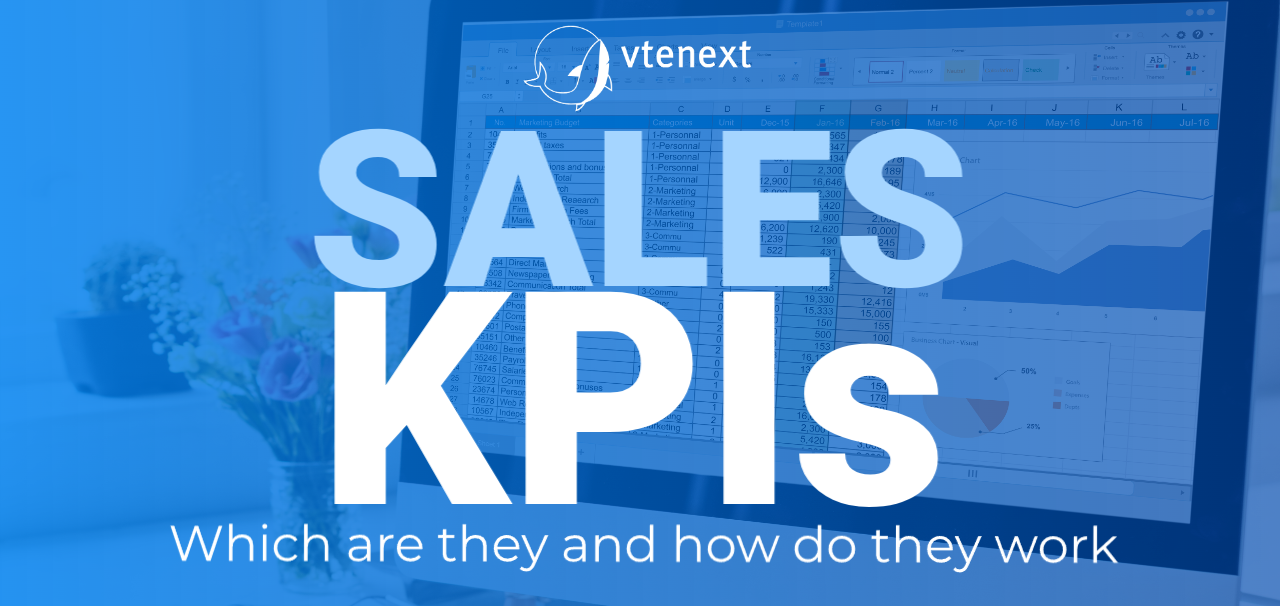Concrete and measurable indicators are needed to guide decisions and measure what really matters in business. Sales KPIs are used for this purpose: to define measurable objectives, evaluate the effectiveness of actions taken and adjust the target when necessary. Each stage of the process, from the first contact to the conclusion of the contract, can be read and understood through precise data.
Companies that achieve consistent results are those that know how to read the right numbers, without getting lost in unnecessary metrics. This allows them to make informed decisions and act consistently with your business objectives.
What are business KPIs
To guide decisions and measure the effectiveness of actions taken, it is essential to know how to read data and business KPIs serve this function. These are essential tools for accurately analysing the performance of assets and resources used in sales processes. These signals indicate the direction of the company’s performance, highlighting progress, inefficiencies or new opportunities.
A good performance indicator can connect daily actions and expected results, aligning operational activities with business objectives. What distinguishes KPIs from generic metrics is their ability to represent the actual distance between the result achieved and expected, allowing a continuous comparison with the periodic objectives.
Depending on the role and level of responsibility, KPIs can change: a manager looks at the overall performance of the team, while a salesman focuses on how many negotiations he is making or how close they are to reaching their target. In both cases, what matters is the ability to use this data to act more deliberately, adapting strategies in real time and improving the effectiveness of decisions.
How to choose business KPIs
Not all numbers convey anything useful. For this reason, selecting business KPIs requires method and awareness. An effective indicator is one that measures what really matters in relation to business objectives, avoiding distractions. The rule is to choose a few relevant data points, easily readable and linked to a concrete action.
The amount of information available in CRMs such as vtenext is enormous, but only a few parameters really help make decisions. Teams that perform best are those that know how to distinguish interesting data from the truly decisive data for improving sales.
Each stage of the sales process can be read through a series of indicators that give a detailed picture of performance.
KPIs related to sales performance
Assessing business performance means understanding how sales are generated, how sustainable they are and who makes them. KPIs such as monthly sales growth, average profit margin or target achievement rate allow businesses to read performance precisely, distinguishing between volumes and quality. Indicators such as the relationship between quotes sent and closed contracts also offer valuable insight into the effectiveness of the team and the alignment between the proposal and the outcome.
In competitive environments, these KPIs help to quickly identify the top performers, and, more importantly, understand where to intervene to improve collective results. Tools such as vendor comparison dashboards or period reports are not only for monitoring, but also for generating comparisons and building awareness.
KPIs on team behaviour and activities
Measuring performance without considering the activities that generate it may provide a partial view. KPIs related to team behavior – such as the number of calls made, emails sent, meetings scheduled or demos conducted – allow teams to assess the level of commitment and operational effectiveness. At the same time, the true value emerges only when these data are compared with the results obtained: high activity with low conversion, for example, may indicate the need to revise the approach or the target.
These KPIs also offer an opportunity for continuous improvement, because they make visible what would otherwise remain implicit. A team recording few activities may not have adequate tools or be experiencing difficulties in the process. By analysing these signals, it is possible to act in a timely manner, support resources and better calibrate the strategy.
KPIs related to the sales cycle and opportunities
Time and opportunity management is one of the critical points in the sales process. KPIs such as the average length of the sales cycle, the value of open negotiations or the percentage of leads converted into customers provide timely insight into the efficiency of the business process. Long lead times, low conversion rates or overly fragmented negotiations can slow down growth even when there is a good flow of contacts.
Analysing these indicators allows bottlenecks to be identified and corrective action to be taken before they become structural. In this way companies can not only sell more, but also sell better, optimizing resources and increasing the success rate with open opportunities. Companies that constantly monitor these variables can improve revenue forecasting, calibrate team activities and intervene more accurately in critical phases of the sales funnel.
Financial and customer value KPIs
In addition to sales volume, what really affects the strength of a business is the quality of revenue. Customer value and financial KPIs help measure how sustainable each acquisition is over time and how much each customer contributes to overall profitability. Indicators such as Customer Lifetime Value, cost of acquisition, average purchase value or monthly recurring revenue allow companies to assess not only whether they are selling, but whether they are building a profitable and lasting customer base.
These data are particularly relevant in long-term subscription or relationship models, but they also provide insights into traditional markets. Tracking retention and churn allows companies, for example, to understand if the problem lies in the business proposal or customer experience.

